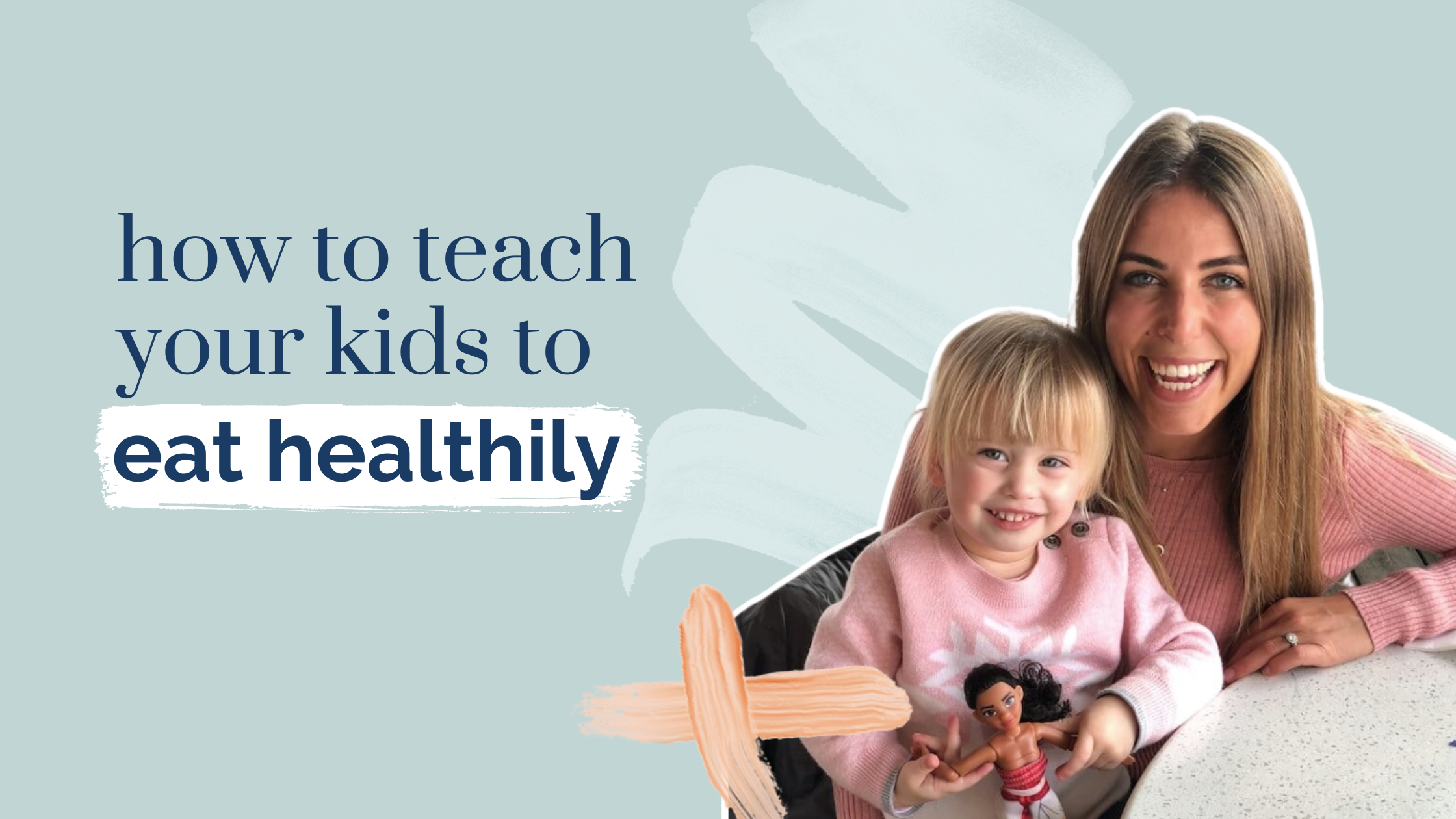How to Teach Your Child Healthy Eating Habits
Raising children to have a good relationship with food can set them up for life. Here’s how to teach your child healthy eating habits and help them have a positive body image.
There are some key strategies to help you raise children with a balanced approach to food.
1. Develop a healthy relationship with food yourself.
Children are sponge-like, learning everything thay can from you. If you’re complaining about your body, they’ll pick up on it. If you’ve got an unhealthy relationship with food, they will know about it.
Your children will see you enjoying a dessert, along with everyone else, exercising for enjoyment and eating bright and colourful vegetables at meals.
I know it’s not easy to feel comfortable in your skin. But it’s worth working toward. It’s important to realise that your body and diet will never be perfect – just like your inbox will never be empty.
Check out the Keep It Real Program is you want to learn how to develop a healthy relationship with food. Another good starting point is by checking out my book Your Weight is Not the Problem.
2. Update your food language.
Using healthy food language around children is so crucial for developing a healthy relationship with food. Research from the Journal of Nutrition Education and Behavior shows that moms of obese children use different words to restrict eating.
Parents of children with obesity were more than 90 per cent more likely to use direct statements such “you’re only allowed one more” to prevent children from eating junk food as opposed to mothers who used less direct statements like “you have had dinner”.
Small changes can quickly help you update the language you use around food.
I like to refer to ‘sometimes’ food or ‘everyday’ food instead of ‘bad’ and ‘good’ food. And if you can, try not to use food as treats as this creates an emotional relationship between their mood and what they are allowed to eat.
I chat more about this in the following podcast episode: How NOT to pass an unhealthy food relationship to your kids.

3. Talk about how food makes you feel. Not weight.
When talking about food, never talk about eating certain food because they will make you fat or lose weight. Instead, talk about how food makes you feel and what it does for you.
Explain that some foods give us great energy so we can do the things we love like play with friends and do sports.
You can explain that some foods make us feel better than others. If you eat too much sugar, it doesn’t make you feel good. Teach them to eat all the colours of the rainbow to get all the nutrients to grow strong and healthy.
Related blog posts:
4. Practice and teach intuitive eating.
Remember being taught to finish everything on your plate? This advice teaches children how to ignore natural hunger and appetite cues.
Teach your children to tune into their hunger. Explain that hunger is a way of telling us when we are ready to eat and fullness is our body’s smart way of telling us it’s time to stop eating.
If they aren’t hungry, don’t force them. If they want food, ask them if they are hungry or bored or tired or something else? If they are hungry, let them fill up on as much healthy, everyday foods until they feel full.
To learn about intuitive eating, check out the Keep It Real Program.
5. Resist the urge to judge yourself.
Your children listen closely to everything you say and do. Making comments about how much you hate your body, certain body parts or complaining when you feel fat or overate will teach children that this is how you should talk to yourself.
Speak kindly to yourself, especially in front of your children. You’ll teach them to see what’s incredible in themselves. Step one? Simply become aware of your own self-talk.
6. Resist the urge to judge others.
This is a BIG one. If you judge other people, what they eat, how much, their weight or other things like how attractive or intelligent they are, kids will notice.
It teaches children how to judge and compare themselves to other people. Like all of us, your children will have things they start to feel self-conscious about.
They begin to think, if people judge that person for being overweight/hairy/stupid, then they will judge me for my shortcomings”.
Teach your children to be self-assured and confident by embracing all different people. You might still have the thoughts, but practice noticing them before verbalising them.
7. Eat at the table, not in front of the TV.
This is hard one, I know. But this habit starts as a kid and stays with you. Children who eat at the table, instead of in front of the TV or a device, are a lot more mindful of their food and are less likely to keep eating once they are full.
Can’t commit to this fully? Keep eating in front of the TV for special occasions/mummy really needs to lie down.

8. Create a healthy environment
When you live in a healthy house, it’s easy to stay healthy. Fill the house with fresh, healthy options and that’s what your children will eat.
If they open the pantry and see chocolate or lollies, it will trigger their brain to crave those foods, even if they weren’t thinking about them before.
9. Get kids involved as much as possible
Often children get stuck doing chores like setting the table (which is fine) but don’t instil a sense of excitement about food time.
If you can, get your kids involved in meal prep and take them shopping. Let them choose fruit for their lunchbox. Ask them to mix in the salad dressing on a salad or add the ingredients to the bowl.
Find cooking a little stressful? Take the guesswork out of food with Back to Basics.
I’ll help you eat healthily – without obsessing so you can create a really healthy relationship with food for yourself – and a positive healthy environment for your kids.





